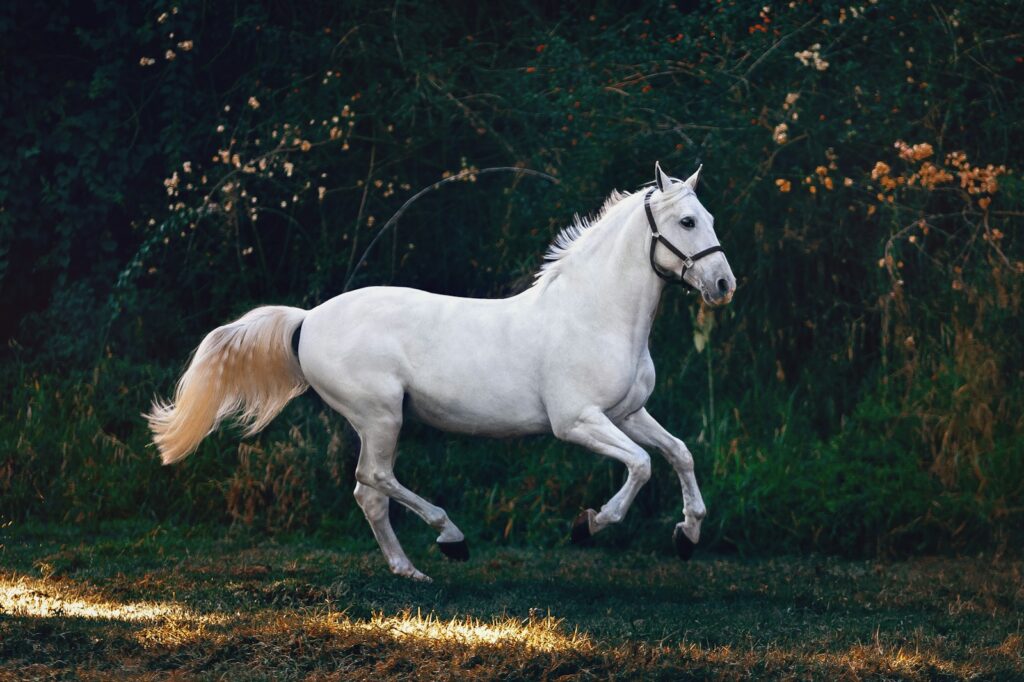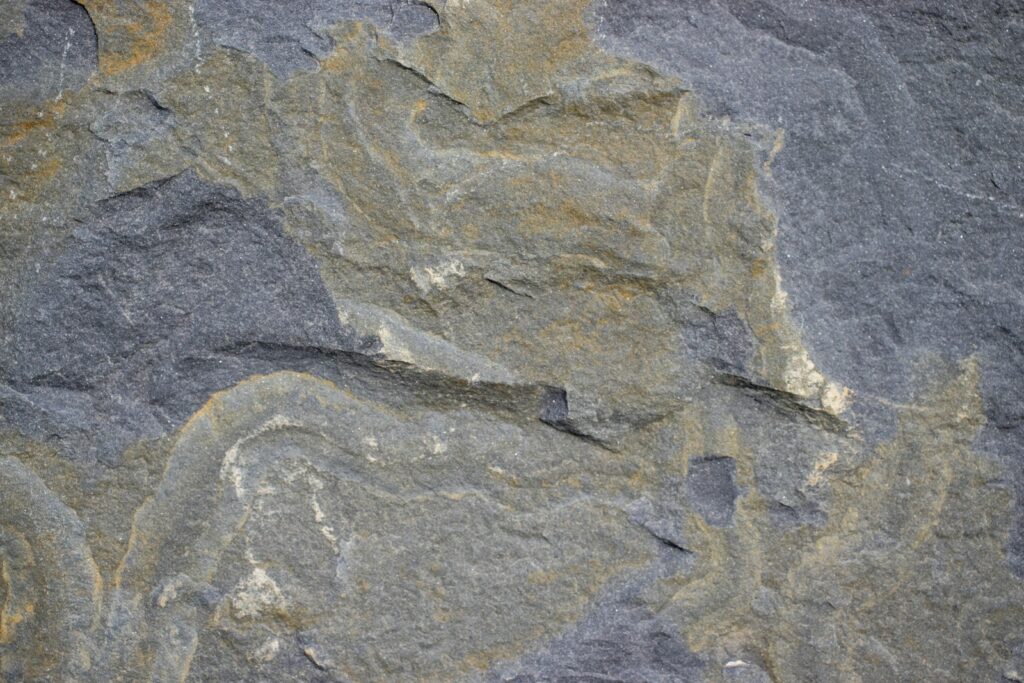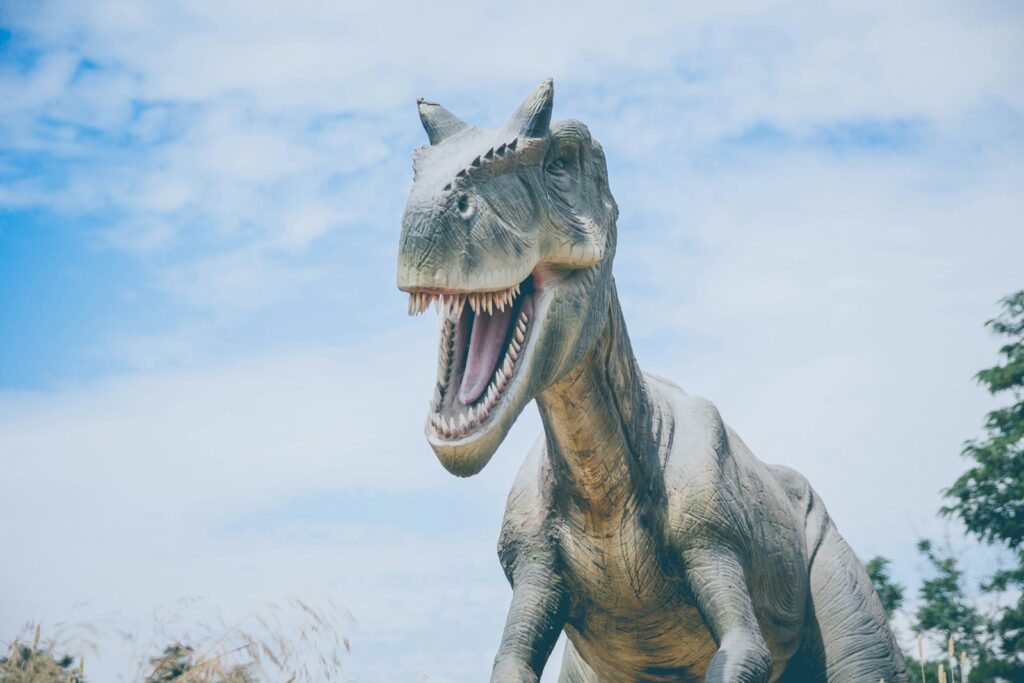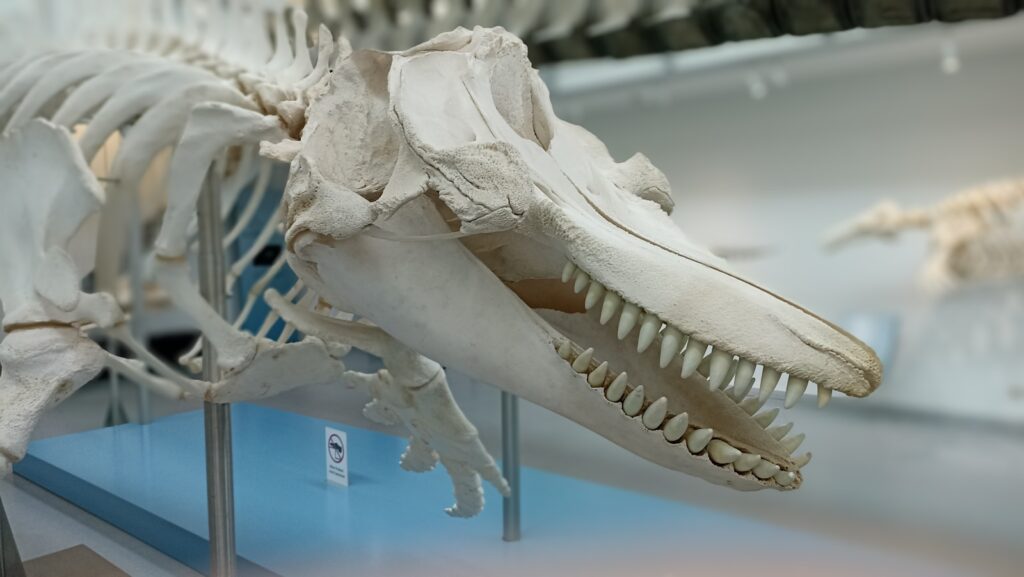When we picture horses today, we imagine majestic creatures standing tall in meadows or racing across open plains. However, the evolutionary journey of the modern horse began with a surprisingly small ancestor no bigger than a fox or medium-sized dog. This remarkable transformation, spanning over 50 million years, represents one of the most well-documented evolutionary sequences in paleontology. The earliest horse ancestor, known as Eohippus or Hyracotherium, stood just 20-24 inches tall at the shoulder and weighed about 50 pounds. Through a fascinating series of adaptations to changing environments and climates, this tiny, forest-dwelling creature gradually evolved into the large, single-toed animal we recognize today.
The Dawn Horse: Eohippus and Its Origins

Eohippus, meaning “dawn horse,” first appeared during the early Eocene epoch approximately 55 million years ago. These diminutive creatures inhabited the warm, humid forests of North America and Europe when these continents were still connected. Paleontologists first discovered Eohippus fossils in the 1840s, but it wasn’t until later that scientists recognized their significance in horse evolution. Unlike modern horses, Eohippus had four toes on its front feet and three on its hind feet, each ending with a small hoof-like structure rather than a single hoof. Its back was arched, unlike the straight back of modern horses, and its teeth were designed for browsing on soft leaves rather than grazing on tough grasses. These physical characteristics reflected its forest habitat, where it navigated through underbrush and consumed soft vegetation.
Dietary Adaptations of the Earliest Horses

The earliest horses were browsers, not grazers, with teeth structured specifically for their forest diet. Eohippus possessed low-crowned teeth with rounded cusps, which were perfect for crushing soft leaves, fruits, and other forest vegetation. This diet differed dramatically from modern horses, which primarily consume grasses. The molar teeth of Eohippus lacked the complex enamel patterns seen in modern horses that help process abrasive grasses. Their dental structure gives paleontologists crucial information about both their diet and habitat. As their environment gradually changed over millions of years, subsequent horse species developed higher-crowned teeth with more complex grinding surfaces to handle increasingly fibrous vegetation. This dietary shift represented one of the most significant adaptations in horse evolution, corresponding directly with habitat changes occurring across North America.
From Forest to Plains: Environmental Catalysts for Evolution

One of the most significant drivers in horse evolution was the dramatic change in global climate and ecosystems during the Eocene through Miocene epochs. Approximately 34 million years ago, Earth’s climate began cooling significantly, transforming vast regions of North America from dense forests to open woodlands and eventually vast grasslands. These environmental shifts presented both challenges and opportunities for early horse species. As forests retreated and grasslands expanded, horses that could adapt to these new open environments had a competitive advantage. Natural selection favored individuals with adaptations for seeing predators at a distance, running faster across open terrain, and efficiently digesting tough grass vegetation. This period of environmental transformation coincided with major evolutionary changes in the horse lineage, demonstrating how closely animal evolution is tied to environmental conditions and climate shifts.
The Evolution of Horse Feet: From Toes to Hooves

Perhaps the most visible transformation in horse evolution occurred in their feet. Eohippus had four toes on each front foot and three on each hind foot, with each toe ending in a tiny hoof-like nail. This multi-toed configuration provided stability on the soft, uneven forest floor. As horses began inhabiting more open environments, their feet underwent dramatic adaptation toward what we see today. By around 5 million years ago, horses had evolved a single toe on each foot, with the side toes reduced to small splint bones hidden within the leg. This single-toe adaptation allowed for greater running efficiency across hard-packed grasslands. The transition wasn’t instantaneous but occurred through intermediate forms like Mesohippus (with three toes touching the ground) and Merychippus (with three toes, but only the center one bearing weight). Each stage represented a successful adaptation to changing environmental demands over millions of years.
Size Matters: The Gradual Growth from Dog to Horse

The dramatic size increase from the dog-sized Eohippus to modern horses didn’t happen overnight but occurred gradually through natural selection over millions of years. This size progression correlates strongly with ecological changes and competitive advantages in new environments. By the Oligocene epoch (about 30 million years ago), horse ancestors like Mesohippus had already grown to about 24 inches at the shoulder, roughly the size of a large dog. Miohippus, appearing later, stood about 40 inches tall. The middle Miocene saw the emergence of Merychippus, standing approximately 40-44 inches high, similar to a modern pony. Each size increase offered advantages: better migration capabilities, improved predator avoidance, and the ability to process larger quantities of lower-quality vegetation found in grasslands. By the time Equus (the genus of modern horses) appeared around 4-5 million years ago, horses had reached essentially modern sizes, with some prehistoric species larger than today’s horses.
Teeth Transformation: From Leaf-Eaters to Grass-Grinders

The evolution of horse teeth provides a remarkable window into their changing diet and habitat. Eohippus possessed low-crowned teeth suitable for its soft forest diet, but as grasslands expanded, subsequent horse species developed dramatically different dental structures. Grass contains high amounts of silica, making it highly abrasive and wearing down teeth quickly. In response, horse evolution favored high-crowned (hypsodont) teeth that continued growing throughout much of the animal’s life. By the time Merychippus appeared around 15-20 million years ago, horses had developed the complex ridged molars characteristic of modern equids. These teeth featured elaborate enamel patterns that created effective grinding surfaces for processing tough vegetation. Fossils clearly show this progression from the simple, low-crowned molars of Eohippus to the high-crowned, complex teeth of modern horses. This dental evolution represents one of the most dramatic examples of adaptation in the fossil record.
The Diversification of Early Horse Species

During the middle stages of horse evolution, particularly during the Miocene epoch (23-5 million years ago), horse diversity exploded across North America. Unlike today, when all modern horses belong to a single genus (Equus), at least 13 different genera of horse-like animals once coexisted across the continent. Some species, like Hipparion, developed elaborate facial features and unique adaptations to specific ecological niches. Others, like Nannippus, remained small even as the general trend moved toward larger body sizes. This period of diversification demonstrates that evolution isn’t a straight line but more like a branching bush with multiple simultaneous adaptations to various environments. Interestingly, this period of maximum diversity preceded a significant extinction event near the end of the Pleistocene epoch, when all horse species disappeared from the Americas until Europeans reintroduced domesticated horses in the 15th century. The fossil record of this diverse family provides valuable insights into evolutionary processes, including adaptation, speciation, and extinction.
Brain Development in Evolving Horses

Along with physical changes to teeth, limbs, and body size, horse brains underwent significant development throughout their evolutionary history. Eohippus had a relatively small brain compared to its body size, with limited areas devoted to complex processing. As horses evolved to inhabit open environments, their brains adapted accordingly, particularly in areas related to vision, coordination, and spatial awareness. Modern horse brains show enlarged visual processing centers compared to their early ancestors, reflecting the importance of detecting predators at a distance in open grasslands. The cerebellum, which coordinates complex movements, also expanded significantly as horses evolved sophisticated running abilities. Brain endocasts (natural molds of the interior of fossil skulls) allow paleontologists to track these neural changes across millions of years. This neurological evolution underscores how adaptation isn’t limited to obvious external features but includes sophisticated changes to sensory processing and cognitive abilities.
Geographical Spread and Migration Patterns

The evolution of horses wasn’t confined to a single geographical region but involved complex patterns of migration across continents. Although horses originated in North America, they spread to other continents via land bridges that existed during various periods of Earth’s history. Around 15-20 million years ago, the ancestors of modern horses migrated into Asia and then Europe and Africa, diversifying into new species adapted to these different environments. Interestingly, after horses had spread worldwide, they became extinct in their original homeland of North America approximately 10,000 years ago during the end-Pleistocene extinction event. This extinction coincided with the arrival of humans to the continent, though climate change also played a significant role. For several thousand years, no horses existed in the Americas until Spanish explorers reintroduced them in the late 15th century. This complex migratory history helps explain the worldwide distribution of fossil horses and their relatives, creating a global evolutionary story rather than a localized one.
The Role of Natural Selection in Horse Evolution

The transformation from dog-sized forest dweller to modern horse represents a textbook example of natural selection in action. Throughout horse evolution, individuals with advantageous traits—those better suited to changing environments—survived at higher rates and passed those beneficial traits to offspring. For instance, as forests gave way to grasslands, horses with longer legs could better escape predators in open terrain. Similarly, individuals with teeth more resistant to the wear caused by silica-rich grasses could process more food and potentially live longer. These slight advantages accumulated generation after generation, gradually shaping the horse’s anatomy over millions of years. The fossil record provides remarkable evidence of selection pressures changing in response to environmental shifts, with adaptations appearing at accelerated rates during periods of dramatic climate change. Horse evolution wasn’t driven by any predetermined direction or goal but rather by the continual process of adaptation to changing conditions through natural selection.
The Emergence of Modern Equus

The genus Equus, which includes all modern horses, zebras, and donkeys, first appeared approximately 4-5 million years ago in North America. These animals had completed most of the major evolutionary transitions that define modern horses: they possessed a single toe on each foot, high-crowned teeth adapted for grazing, and a body size comparable to modern horses. Equus quickly spread from North America into Asia, Europe, and Africa, diversifying into various species along the way. Modern genetic and fossil evidence suggests that all domestic horses descend from wild populations that once inhabited the Eurasian steppe. By studying the emergence and spread of Equus, scientists gain insight into relatively recent evolutionary processes that shaped modern horse diversity. The success of this genus across multiple continents demonstrates the effectiveness of the horse body plan for survival in grassland environments worldwide, representing the culmination of 55 million years of evolutionary adaptation.
Horse Evolution as a Window into Earth’s Climate History

Horse evolution provides paleontologists with remarkable insights into ancient climate and environmental conditions. Because the horse family underwent such significant and well-documented adaptations in response to environmental changes, their fossils serve as excellent indicators of prehistoric conditions. For instance, the shift from low-crowned browsing teeth to high-crowned grazing teeth directly correlates with the expansion of grasslands across North America. Similarly, the movement toward longer limbs and single-toed feet reflects the transition from forest to open plains. By analyzing these evolutionary changes and their timing, scientists can reconstruct ancient ecosystems with remarkable precision. Horse fossils help document major global cooling events, the spread of seasonal grasslands, and even shifts in rainfall patterns across geological time. This makes horse evolution not just an interesting biological story but a crucial tool for understanding Earth’s climate history, demonstrating the intimate connection between biological evolution and environmental change.
From Wild Ancestors to Domestic Partners

The final chapter in horse evolution involves their domestication by humans, beginning approximately 5,500-6,000 years ago on the Eurasian steppe. This process represents a profound shift in horse evolution, where natural selection was partially replaced by artificial selection driven by human preferences. Early domestic horses were primarily used for meat and milk, with riding coming later in the domestication process. Unlike their wild ancestors that evolved adaptations for survival in natural environments, domestic horses developed traits humans found useful: docility, strength, speed, and various physical characteristics suited to different tasks. Through selective breeding, humans created the diverse breeds we see today, from massive draft horses to tiny ponies, all descending from wild ancestors similar in size and appearance. Archaeological evidence, including ancient DNA, shows that domestication happened multiple times with different wild populations, creating a complex genetic legacy in modern horses. This partnership with humans saved horses from potential extinction and spread them across the globe, making domestication the most recent but equally significant chapter in their evolutionary story.
From Tiny Dawn Horse to Majestic Equine: The Evolutionary Journey of Horses

The evolution of horses from dog-sized forest browsers to the majestic animals we know today illustrates the remarkable power of natural selection working across vast This 55-million-year journey from Eohippus to Equus ranks among the most complete and well-documented evolutionary sequences in the fossil record. Each adaptation—from changing teeth to lengthening limbs to single-toed feet—represents a response to specific environmental challenges and opportunities. As we continue studying this extraordinary evolutionary story, we gain deeper insights not only into horse biology but also into Earth’s changing climate and the fundamental processes that shape all life. The tiny “dawn horse” and its descendants provide a window into our planet’s past and a powerful demonstration of evolution’s creative force, transforming a dog-sized leaf-eater into one of humanity’s most important animal companions.




